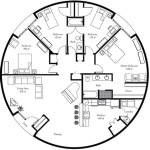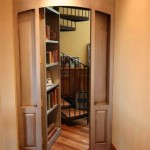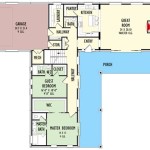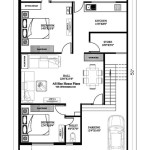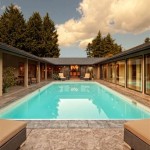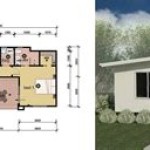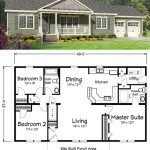Tiny Home Open Floor Plan: Maximizing Space and Functionality
The concept of tiny home living has gained immense popularity in recent years, driven by a desire for simplicity, sustainability, and affordability. While the idea of downsizing to a smaller home might seem daunting, it presents an opportunity to embrace a more minimalist lifestyle and create a functional and stylish living space. One key design element that contributes significantly to the success of a tiny home is the open floor plan.
An open floor plan in a tiny home refers to the absence of traditional walls and partitions, creating a seamless flow between the living, dining, and kitchen areas. This approach maximizes the available square footage and fosters a sense of spaciousness, despite the modest dimensions. While the concept may sound simple, it requires careful planning and execution to ensure optimal functionality and aesthetics.
Advantages of an Open Floor Plan in a Tiny Home
Several advantages come with embracing an open floor plan in a tiny home. These include:
1. Enhanced Sense of Space
By eliminating walls and creating a continuous flow, an open floor plan visually expands the limited space within a tiny home. This illusion of spaciousness contributes to a more welcoming and comfortable living environment, making the home feel larger than it actually is. The lack of visual barriers allows natural light to penetrate deeper into the space, further enhancing the feeling of openness.
2. Increased Flexibility and Multi-Functionality
An open floor plan allows for flexible furniture arrangements and multi-functional spaces. For instance, a sofa can double as a guest bed, or a dining table can be used for work or hobbies. This versatility maximizes the utility of every square inch, allowing the homeowner to adapt the space to their needs and preferences.
3. Fostering a Sense of Community
The open floor plan encourages interaction and communication between residents. By eliminating physical boundaries, it creates a more intimate and connected living environment. This can be particularly beneficial for families or couples who enjoy spending time together. The absence of walls also creates a sense of openness and transparency, fostering a sense of community within the tiny home.
Designing an Open Floor Plan for Functionality
While the concept of an open floor plan is appealing, it requires careful planning to ensure functionality and avoid potential drawbacks. Several key considerations are crucial:
1. Strategic Furniture Selection and Placement
Choosing the right furniture is essential for maximizing space and creating a functional open floor plan. Multi-functional pieces like sofa beds, storage ottomans, and folding tables are highly advantageous. Careful consideration should be given to the placement of furniture, ensuring a clear flow of movement throughout the space and avoiding any obstructions or cramped areas.
2. Incorporating Storage Solutions
In a tiny home, storage is paramount. The lack of traditional walls requires creative solutions to maximize storage capacity. Built-in cabinets, drawers, and shelves should be strategically incorporated into the design, offering ample storage space without compromising the open feel of the home. Utilizing vertical space with tall cabinets or shelves is also an effective strategy for maximizing storage potential.
3. Defining Zones with Visual Cues
While an open floor plan eliminates physical walls, it's important to create distinct zones for functionality. This can be achieved through various visual cues like area rugs, different flooring materials, or strategic lighting. These elements help define the living area, dining area, and sleeping area, creating a sense of order and organization within the open layout.
Conclusion
The open floor plan is a highly effective design strategy for maximizing space and functionality in a tiny home. By eliminating walls and creating a seamless flow between areas, the home feels larger and more welcoming. However, careful planning is required to ensure a functional and aesthetically pleasing layout, considering furniture selection, storage solutions, and the use of visual cues to define various zones within the space.
:max_bytes(150000):strip_icc()/wanderinstarfarms_103561926_275439266841919_804825427512003420_n-f6f92ef6e3e642acb214c24736ceb114.jpg?strip=all)
11 Beautifully Designed Tiny Homes

10 Small House Plans With Open Floor Blog Homeplans Com

7 Tiny House Floor Plans With No Stairs Small Cottage

Open Concept Rustic Modern Tiny House Plans Sources Ana White

Open Concept Tiny House Designs Ideas On Dornob

Open Concept Rustic Modern Tiny House Plans Sources Ana White

10 Extreme Tiny Homes

27 Adorable Free Tiny House Floor Plans Craft Mart

38 Tiny House Has Main Floor Bedroom Two Lofts Kitchen Living Plans

12 X 24 Tiny Home Designs Floorplans Costs And More The Life


